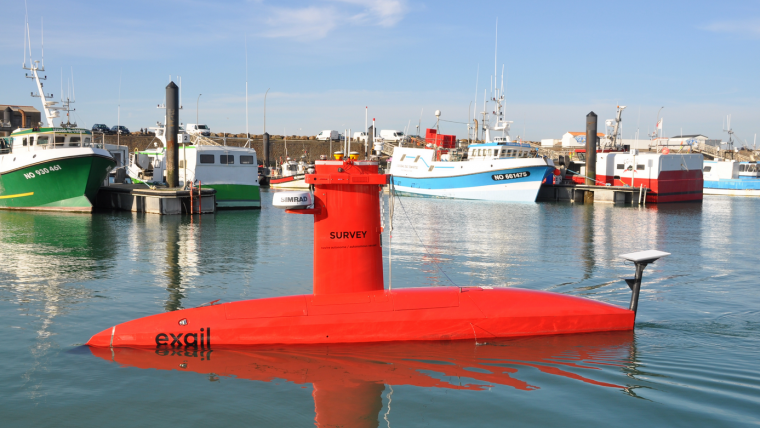Hydrographic surveying goes green
Innovation and adaptation in a changing world
Amid new climate policies, the global energy transition is in full swing. This is leading companies and organizations to take a variety of measures to make their business operations more sustainable. Service providers focusing on hydrographic and geophysical surveys are taking significant steps to assume their responsibilities, which often proves beneficial for their business as well. This article takes a closer look at the impact of environment, energy and climate targets on the hydrographic industry, examining both the opportunities presented by the energy transition and the ways in which companies can move towards greener business practices.
Adopted by most countries in 2015, the Paris Agreement sets an ambitious goal to limit global warming to below 2°C above pre-industrial levels, with a preference for capping it at 1.5°C. This aims to substantially mitigate the impacts of climate change and calls for immediate action to reduce greenhouse gas emissions. The agreement also aims to reach net-zero emissions by 2050, paving the way for a more sustainable future. Furthermore, it acknowledges the significant contribution of the business community as a non-governmental actor in tackling the problem.
The hydrographic industry has a significant role to play in reducing CO2 emissions, especially with regards to shipping emissions that have garnered increasing attention. As a result, hydrographic service providers are increasingly expected to contribute by investing in sustainable solutions.
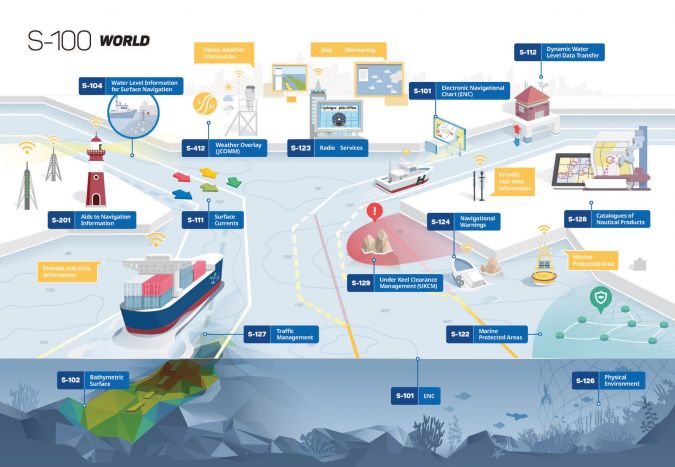
Greening the hydrographic industry
Hydrography is a fundamental discipline for all sea-related activities, as it deals with the physics of the marine environment. In the context of this article, hydrographers play a crucial role in observing and responding to the impacts of climate change. With rising ocean temperatures and melting polar ice, coastlines are shifting and hydrographic data is changing. This underscores the importance of the International Hydrographic Organization (IHO) in leading efforts to mitigate and adapt to the effects of global warming. By taking decisive action, hydrographers can help ensure the sustainability of our oceans and coastal communities for generations to come.
One of the key goals of the IHO is to enhance hydrographic support for safe and efficient maritime navigation, especially in light of ongoing transformations in the industry. Two crucial aspects in this regard are the development of autonomous shipping and the reduction of emissions, which are driving significant changes in hydrographic services. To address these new requirements, the IHO and its Member States are focusing on a range of hydrographic data products and services based on the Universal Hydrographic Data Model. These efforts aim to support the needs of autonomous shipping and help reduce emissions, as indicated by the IHO 2021 Annual Report.
Decarbonization and the adoption of zero-emission fuels are becoming top priorities for shipping companies and port authorities alike. The ISHY project (Implementation of Ship Hybridization) is a noteworthy European initiative that aims to develop, test and validate technical tools and socio-economic implementation models for hybrid and fuel cell-powered ships. The project also encompasses hydrogen supply aspects in ports. By updating and building several types of ships, the project aims to demonstrate the effectiveness of these approaches in reducing CO2 emissions.
GEOxyz is collaborating in the ISHY project through its GEO Aqua division to develop a green crew transfer vessel that will use hydrogen for the hybrid transportation of technicians and goods to offshore wind farms. The primary objective is to increase the adoption of this low-CO2 technology in the offshore wind industry, thereby promoting a greener supply chain and the use of green energy. Through this project, GEO Aqua aims to significantly reduce the environmental footprint of its vessel fleet.
Clinton Marine Survey is a leading offshore survey company based in Gothenburg, Sweden. The company specializes in working in extreme shallow to offshore waters and owns a fleet of tailor-made vessels with advanced MBES and SBP systems. Clinton is committed to reducing its environmental impact and achieving ambitious environmental targets every year. The company has implemented various initiatives, such as electrifying vehicles, minimizing travel, waste reduction and recycling programmes. One noteworthy initiative is positioning data processing personnel at the Gothenburg office, which significantly reduced the company’s carbon footprint. These initiatives serve as a prime example of how companies can work towards greater sustainability and innovation in their industry.
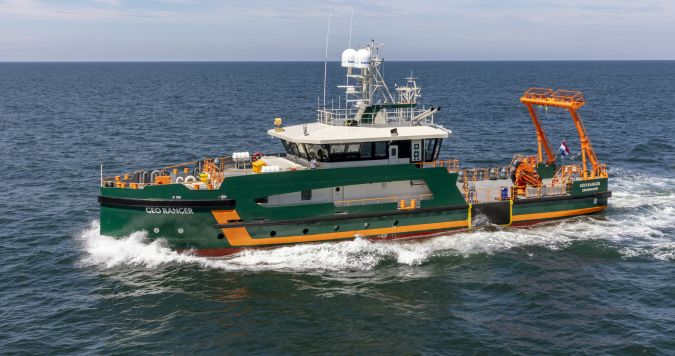
Sustainable surveying solutions
Innovation is a critical success factor in the hydrographic industry, especially in terms of sustainability. Geo Plus, a renowned Dutch company that specializes in hydrographic surveys around the world, is dedicated to renewable energy and reducing the use of fossil fuels. To achieve this goal, the company equips all new ships with energy-efficient hybrid engines, resulting in a 75% reduction in fuel consumption during surveying operations. This approach aligns with their sustainability goals and provides cost savings for customers.
Ship noise is a major threat to underwater sea life, especially marine mammals such as seals and whales. In response, Geo Plus has developed modern survey vessels that produce significantly less noise than conventional ships. This innovation has numerous positive effects, including dramatic improvements in the quality of the survey data collected by their sensors.
Geo Plus’ commitment to sustainability and innovative technology has allowed it to become a leader in responsible hydrographic surveying, while also improving the quality and accuracy of its work.
Uncrewed surface vehicles (USVs) are a safe, cost-effective and environmentally friendly way to collect ocean data, including mapping the seabed and monitoring the environment. XOCEAN is a leading company that offers turnkey ocean data collection services to surveyors, companies and agencies. It manages the entire process, from mobilization to data delivery, using full uncrewed ‘over-the-horizon operations’ and satellite communications. Each USV transmits real-time images and situational awareness data to an operations centre, where qualified USV pilots monitor and control the vessels 24/7 to avoid collisions. XOCEAN also partners with universities and research institutions to advance oceanographic research.
Autonomous and uncrewed solutions play an important role in making the sector more sustainable. Duncan Mallace, the chief strategy officer at XOCEAN, notes that its USVs emit only 0.1% of the emissions of a typical survey vessel, and don’t require people to go offshore. This approach closely aligns with the values of XOCEAN’s customers and partners, who prioritize remote data collection of the highest quality.
The ocean data acquisition company recently completed its first large-scale seabed survey for Vattenfall using USVs. The surveys were carried out at several of Vattenfall’s offshore wind farms located in Denmark, Sweden and the United Kingdom. The results of the surveys were highly positive, not only from a climate perspective but also in terms of safety. The use of uncrewed vessels has the advantage that it reduces the risks associated with traditional surveys while minimizing the carbon footprint of the operation.
Accelerating the adoption of renewable energy sources is important for mitigating the effects of climate change. Offshore wind farms provide clean and renewable energy that is particularly advantageous due to the stronger and more consistent wind speeds found offshore. Saildrone, a provider of ocean data solutions, offers uncrewed vehicles that use wind power to support every aspect of an offshore wind farm’s life cycle. This technology has the potential to play an important role in promoting the use of offshore wind energy, which can help to reduce reliance on fossil fuels and promote a sustainable energy mix.
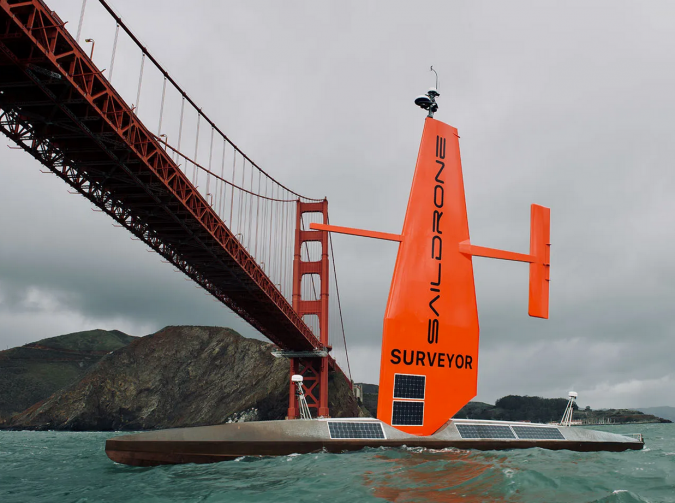
New energy forms create hydrography opportunities
Offshore wind farms offer plenty of opportunities for hydrographic service providers. Geo Plus recently conducted a geophysical survey campaign for the North Irish Sea Array (NISA) Offshore Wind Farm, using two vessels to survey water depths over and under 10m. Geo Plus specializes in seafloor scanning and mapping, including detecting changes in the seabed and locating unexploded ammunition and shipwrecks. It delivered high-quality results with its expertise and state-of-the-art equipment.
Besides offshore wind farms, the hydrogen sector is opening up new opportunities for hydrography, surveying and engineering companies. One of the most exciting examples is the announcement of one of the world’s first large-scale, wind-powered offshore hydrogen production facilities by the Dutch government. The facility will be located in the Dutch part of the North Sea, north of the Wadden Islands, utilizing an existing wind farm and natural gas pipeline. The wind farm boasts approximately 500 megawatts of electrolysis capacity and the facilities are slated for completion around 2031. This well-connected location offers potential for easy transport to land and connection to the onshore hydrogen network.
The Netherlands is positioning itself at the forefront of the energy transition with this groundbreaking initiative. The Dutch government has already designated the area as a preferred location, paving the way for swift preparations and providing the sector with clarity to make investment plans. This pioneering project is relatively new to our field, and will require a significant amount of hydrographic survey work.
As the above examples show, with the hydrographic industry’s expertise in surveying and mapping, there are significant opportunities to contribute to a greener future.
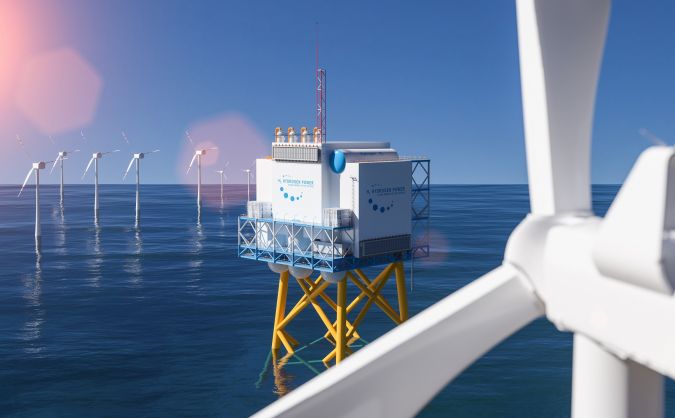
Next steps
The recent Exail Maritime Users Conference provided valuable insights into the direction of hydrographic surveying. Exail is a new company that resulted from the merger between ECA and iXblue. During the event, attendees witnessed a remarkable demonstration of DriX. Despite being thousands of kilometres away in the south of France, the USV was operated remotely from the conference room. The presentation showcased several of the vessel’s capabilities, including collision avoidance, which worked flawlessly, and the new autoline option. This feature enables DriX to automatically plan survey lines using various software settings. While some bathymetry clipping was required to create straight lines, the autoline option is an exciting development that brings us closer to autonomous survey operations and sailing capabilities.
Replacing conventional large, crewed inspection and survey vessels with uncrewed alternatives such as the DriX USV can significantly reduce the carbon footprint of offshore operations.
As climate change and sea-level rise continue to impact daily life, the hydrographic profession is not immune to these challenges. In an exclusive interview, Tion Uriam, the national coordinator for hydrography and charting in Kiribati, sheds light on the daunting obstacles faced by the Pacific Island nations and underscores the critical importance of addressing the root causes of these issues.
Uriam goes on to describe how Kiribati is actively working to educate and raise awareness about the significance of hydrography and the impact of climate change. His insight and perspectives offer invaluable lessons for professionals and individuals alike who are seeking to better understand the ways in which we can address these critical issues.
For those looking to delve deeper into this topic, we highly recommend our full interview with Uriam. It’s the perfect way to wrap up why this article was written, as it aims to explore both the opportunities presented by the energy transition and the practical steps that companies can take to embrace greener business practices.
Conclusion
The hydrographic industry must contribute to a more sustainable world by adopting carbon-neutral policies and promoting research and collaboration. Hydrographic institutes and the academic sector play crucial roles in driving innovation and facilitating the transition to a cleaner, more sustainable energy future. A shared vision is necessary to benefit the sector and the planet, and collective action is needed to tackle the climate crisis.
As the global energy transition gains momentum, hydrographic and geophysical survey service providers are taking steps to make their business operations more sustainable. Some providers are developing green crew transfer vessels with energy-efficient hybrid engines to decrease fuel consumption, while USVs provide a cost-effective and eco-friendly way of gathering ocean data.
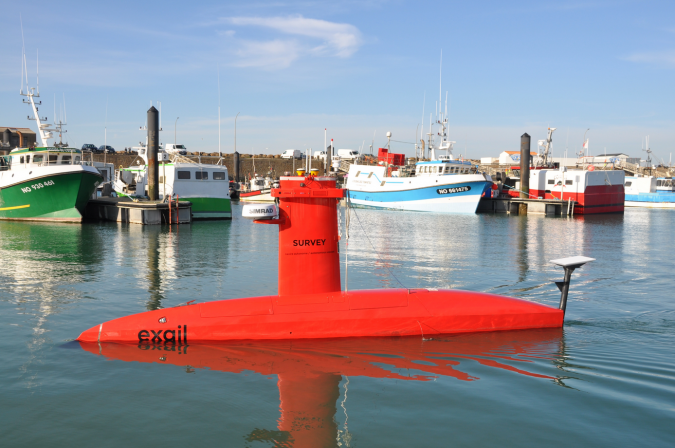

Value staying current with hydrography?
Stay on the map with our expertly curated newsletters.
We provide educational insights, industry updates, and inspiring stories from the world of hydrography to help you learn, grow, and navigate your field with confidence. Don't miss out - subscribe today and ensure you're always informed, educated, and inspired by the latest in hydrographic technology and research.
Choose your newsletter(s)
